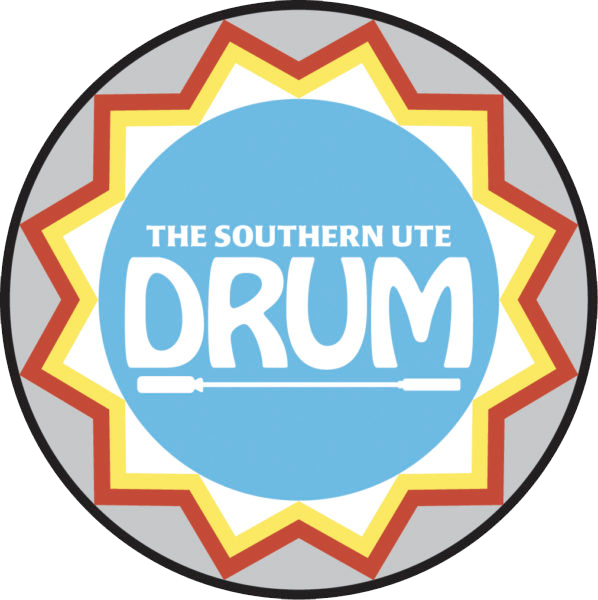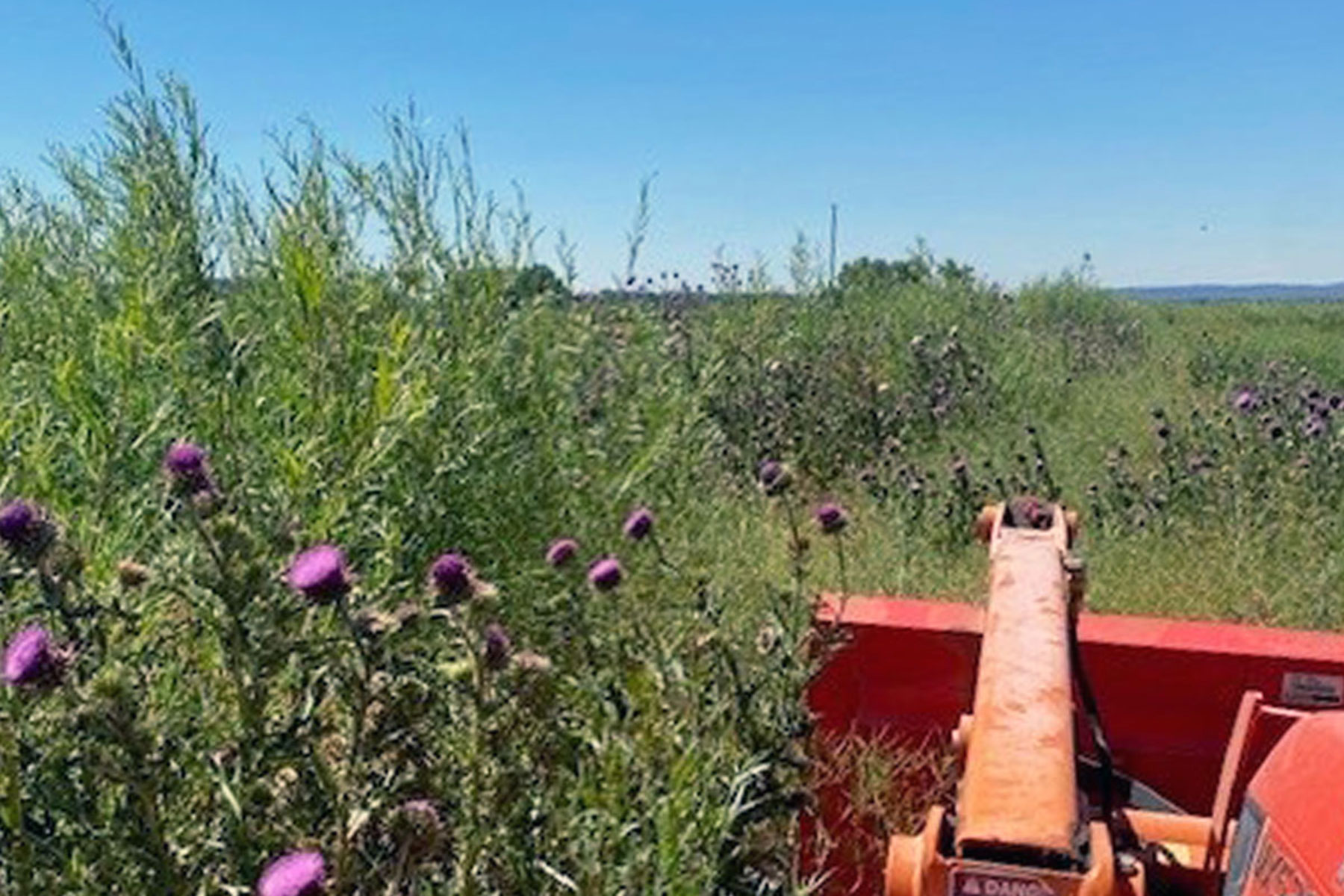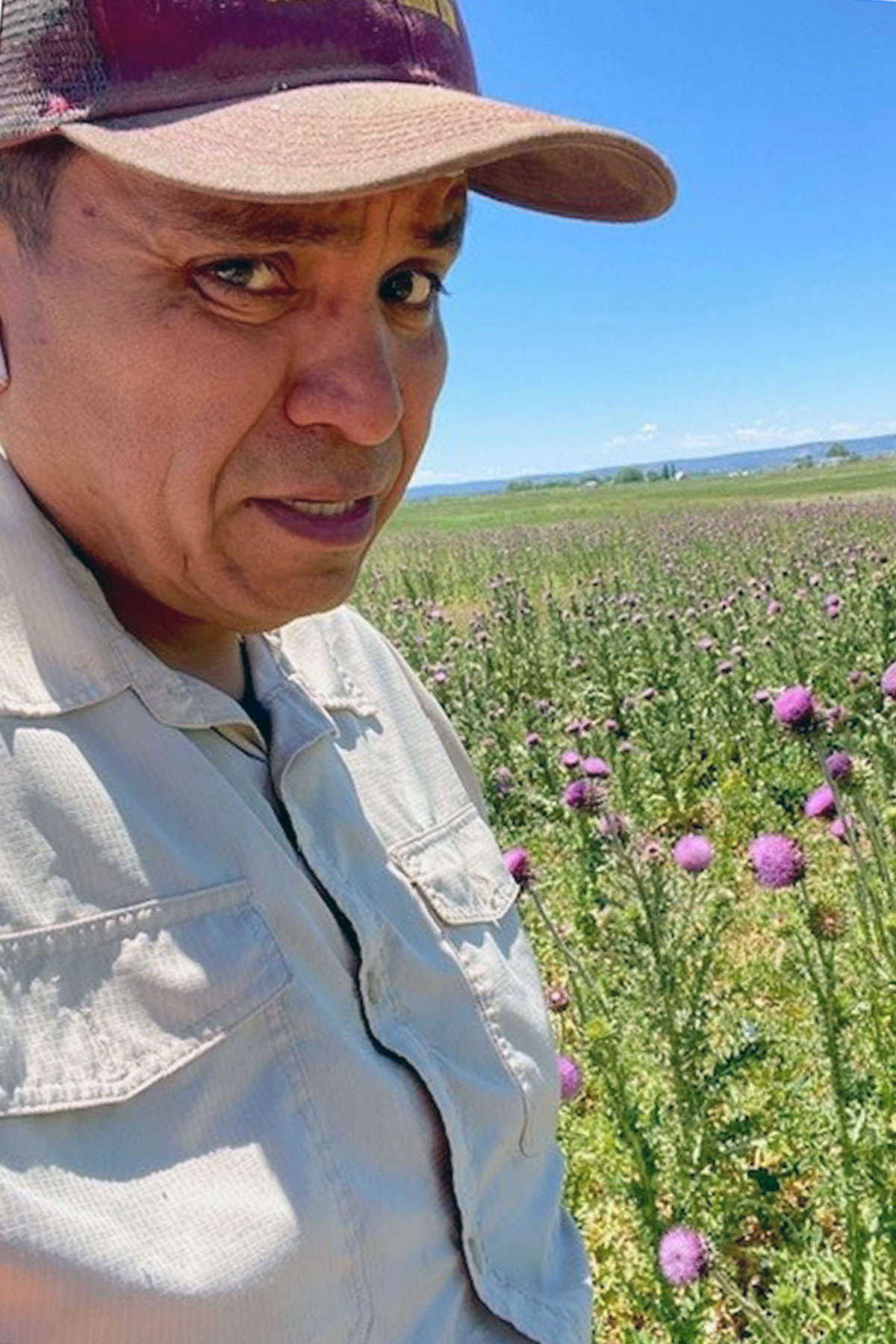A sticky summer
Moving into summer grasses and weeds
Cool weather grasses were all the rage back in May and June. This is also where I think most of us hay farmers find comfort. Timothy, orchard grass, and brome make up the bulk of my fields. I’ve been told that the season is over after first cut … I beg to differ.
Though I agree that the grasses do stall through most of the summer, there is a rally that can happen in August and early September. My property saw a better yield last year with second cut in early September than I did with first cut. The blend of the bale is much different. The first cut is more of the pure cool grass mix. The second cut was a culmination of the struggling grasses coupled with whatever weed sticks, blue flower things, and scraggly summer growth begins to infiltrate the fields.
I always thought that there was less of a demand for this when compared to the pure spring cut. As it turns out, many differing livestock equally prefer the second cut because the blades and stems are finer. The summer grasses are quite palatable for many types of animals. My mentors have been pushing to put alfalfa into the fields to boost tonnage. Also, Alfalfa thrives better in the heat thanks to the deep roots. And then, of course, Alfalfa gives nutrients back to the soil.
These are all great reasons to diversify the fields. Bottom line is that this would benefit many farmers, but my niche is smooth thin blade grasses and mixes that do not include Alfalfa. My blends are more for a specialized horse blend. Hard to explain, but I just got to trust my gut on what I plant and when to harvest it.
Was digging up the ditches a good idea?
Sometimes you just need to commit to the cause. I made the decision to plow up my ditches last year because I was investing in a new type of irrigation system. By plowing up the primary ditches and feeder ditches, I estimated that I could increase productive field area by 22%. This coupled with overseeding the entire property and a healthy dose of fertilizer should see good gains for this year and the years into the future. My big miscalculation was that the irrigation system fell behind schedule and though we did have a little rain at the end of May, the summer has been excessively dry.
The optimism turned sour slowly. I watched my green grass turn brown. Then I watched it turn yellow. The crickets came and haven’t left yet. Sunflowers and Thistle began to take up residence on the property. I sometimes think the prairie dogs are judging me. The best I could do is to keep the fields manicured and cut low as to prepare for when the water does eventually get turned on. I think this is something I will continue to do going forward.
I like the way the fields look when the borders, fence lines, and trouble areas are shaved. It keeps snakes and critters populations low. It also helps to guide the cutting, raking, and baling process so as to incorporate less weeds and willow into the bales. Through it all, my hopes stay high because I know it will all be better once the water comes on.
The business plan is solid, and my projections can be easily increased next year to cover this year’s losses. Giving yourself a buffer to take risks and understanding how to bounce back is crucial. It relieves stress and paranoia. Every farm is different, and every farmer is unique. I listen to what other people say, but I also follow my heart when making decisions. Some work out and some don’t. At the end of the seasons, I adjust based upon what I learned.
I think if we just follow someone else’s blueprint completely, we become bored. It isn’t our farm; it is just an extension of someone else’s. Who knows, maybe in the process, we invent our own best practices, and we can celebrate the wins that we create. Most importantly, it is an extension of our confidence and our innovation. Enjoy the victories, but also enjoy the mistakes and the curves that mother nature throws at you. You will learn more each day and next year will always be better than this year, if you persist.




